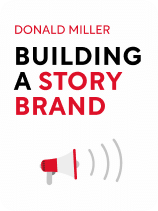

This article is an excerpt from the Shortform book guide to "Building a Storybrand" by Donald Miller. Shortform has the world's best summaries and analyses of books you should be reading.
Like this article? Sign up for a free trial here .
How do email marketing campaigns work? How do you create good email marketing campaigns?
Email marketing campaigns are series of planned emails that remind customers of your business or services. You can offer specials, sales, or other marketing tactics through these campaigns.
Read more about email marketing campaigns and how to us them.
Build Email Marketing Campaigns
An automated email campaign is a series of prewritten emails that are sent on a schedule to anyone who signs up for your lead generator. The goal of this kind of campaign is to remind your customers that your business exists. They may not need whatever product or service you’re offering when they first hear of you, or the next few times they next think of you, but when they do need something, you want them to remember you and how they can contact you.
Even if no one actually reads your emails (20% open rate is the industry average), in the time it takes someone to delete them, she’ll have reread your brand’s name and possibly seen your logo.
Don’t worry if people unsubscribe from your list. This is actually a good thing—they’re self-identifying as unqualified customers who will probably never buy anything from you. If they’re never going to buy, you don’t need to be paying your email service provider to send messages to them.
Create a Nurturing Campaign
A nurturing email marketing campaign is a series of emails that offer valuable information related to your brand. The goal of a nurturing campaign isn’t to get people to buy; it’s to create reciprocity and trust, and to establish authority. Once in a while during the campaign, you can remind people what you offer and ask for a sale.
Typically in a nurturing campaign, emails go out once a week. The first three emails are nurturing—they share information—and the fourth is a call to action. Then, the pattern repeats.
The Nurturing Email
To create the nurturing email for the email marketing campaign, follow the formula below and use the ideas and content you came up with in your brandscript:
- Bring up a problem.
- Lay out a plan for fixing the problem.
- Explain how life will be improved after the problem is fixed.
- Include a P.S. because if people read any part of your email, it’s this part.
- Put your logline and contact information in the email signature so that if anyone does want to buy from you at this early stage, they have all the information they need.
Shortform Example
Email Subject: The Best Chocolate Chip Cookie Recipe
Dear [customer name],
There are so many good chocolate chip recipes out there—which to try first? (1) Here at Yummy Cooking Store, our staff has tested over fifty chocolate chip recipes and we’d like to share our favorite with you (2):
[recipe]We’re sure you, your friends, and your family will love these cookies! (3)
Happy baking!
Sincerely,
Yummy Cooking Store
We equip amateur bakers with the tools they need to pull off even the toughest recipes and impress their family and friends. (5)
P.S. Next time you’re in our neck of the woods, pop into the store and tell us about your favorite dessert—we have recipe recommendations for everything! (4)
The Call to Action Email
To create the call to action email, follow the formula below and use the ideas and content you came up with in your brandscript. (Steps 1 and 3 are the same as for the nurturing email.)
- Bring up a problem.
- Mention a product you sell that fixes the problem.
- Explain how life will be improved after the problem is fixed.
- Call the customer to action directly. (Don’t be passive—as discussed earlier, passivity suggests weakness or a lack of confidence in your product.)
Shortform Example: Email Marketing Campaigns
Email Subject: A solution for stuck cakes
Dear [customer name],
At some point or another, every baker encounters a cake that sticks to the bottom of the pan (1). No matter how well you greased or floured the pan, your cake is stuck, and it’s nearly inevitable that it’ll break as you try to get it out. We hate this so much we developed a special non-stick cake pan that makes cakes slide right out the pan (2). No more banging on pans or cutting cakes out of them! (3)
Right now, we’re offering this cake pan at half price. Call us today at 123-4567 to reserve yours. (4)
Happy baking!
Sincerely,
Yummy Cooking Store
info@deliciousbaking.com
We equip amateur bakers with the tools they need to pull off even the toughest recipes and impress their family and friends.
P.S. Make sure to call today—the pans are going fast! (4)
Email Campaign Software
There are many different kinds of email marketing campaign software, and the author recommends:
- If you work with an ad agency or designer, let them use whatever system they’re already familiar with.
- If you have a small email list, use MailChimp, which is simple and reliable.
- If you have a large list that you need to segment, or you want advanced features, use Infusionsoft.

———End of Preview———
Like what you just read? Read the rest of the world's best book summary and analysis of Donald Miller's "Building a Storybrand" at Shortform .
Here's what you'll find in our full Building a Storybrand summary :
- How storytelling enhances brand marketing
- Why you should make the consumer the hero of your brand's story
- The 7 elements that make marketing work






